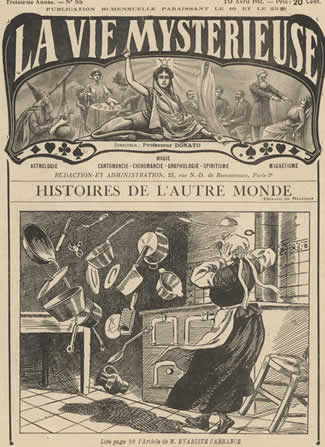.jpg)
"Everything has been said before, but since nobody was listening, we have to keep going back and starting over."
André Gide.
Antoni Gaudí & Eusebi Güell walk down a street of Barcelona (Carrer dels Tallers), one day of solstice in 1910, while smoking cigars, and they smoked in Catalan.
As you see, they are surrounded, dare one say, flanked, by two, ahem..? Catholic priests?
Dos curas.
Yes, apparently Güell (the tall guy with monocle) and Gaudí (the shorter guy) were fervent Catholics... even more: didn't Gaudí build the Episcopal Palace of Barcelona and the Sagrada Familia, among other spaceships of piety?
Gaudí once said:
"Rhomboidal churches, parallelepiped basilicas, bullfighting, bread and tomatoes, Catalunya[sic] doesn't need more."
Güell, who was a maecenas, he was enthused for all these three-dimensional modernist Heavens of Gaudí, and decided to create a dome, which would be named after him: Park Güell, and he engaged Gaudí to build it, complete, de pe a pa:
Gaudí accepted the challenge: first of all, he calibrated the terrain with a transparent sextant of glass.
Later, he cleaned the land, removing the copious plutonium from the soil, by means of galvanism and a set of mirrors.
Then, at the entrance of the park, Gaudí put two esoteric blazons:

because, besides a Catholic architect, Gaudí was a pagan.
The park was inaugurated:
astonished, the first visitors realized that those domes were designed following the aerodynamics of the so-called degenerate geometry, having amphoras with cigars settled at every corner of those gardens, so that the visitor, as he walked by those yellow sidewalks, could pick a cigar from an amphora, and smoke in Catalan... if you are in Catalonia, you smoke in Catalan, if you are in England, you smoke in English, simple.
Gaudí and Güell were fond of all things misteric, abracadabra-esque and horoscopal, so they put a ginormous horloge of stone in the middle of those gardens, and Güell named it "gnomon"
and the gnomon had a sundial incrusted in its centre with a laser lens which emitted coherent radiation:
the radiation of the lens, focused on a human brain, provoked not only grotesque phantasies and songes, but also allowed the receptor brain to foresee the future.
And that huge stone, that reloj or solar clock, which was painfully heavy, it was transported by Güell and Gaudí themselves, by force of muscle.
Astonished by this audacity, by this insolence of the horology (banned in Europe back then), many tourists started visiting the Park Güell, to see this solar monument, this horary quadrant, which was settled on a pedestal of platinum.
Güell and Gaudí observed the visitors with an undiminished smile of triumph in their lips, smoking in Catalan a pair of cigars picked from two amphoras, and the amphoras were carved like hip of woman by Güell himself (he also was a magus), and he used stereotomy to do this; and Jack el Destripador, Henri Désiré Landru and the "Petiso Orejudo" visited the park, and departed and smoked amiably, smoking in Catalan in 1910.
Like an unexpected demonomagy, the breeze coming from the Mediterranean sea started bringing trash in the air, which oxidated the gnomon, the grass and the zodiacal cupolas of the churches of the park
Güell and Gaudí should do something, as soon as possible, otherwise their park of sortileges would get rotten in a few weeks:
quickly they covered everything with antioxidant -even the grass-, moving the paintbrush at high speed with their minds, by means of ecclesiastical faith
then, to conjure the pernicious breeze away, with a series of open sesame's and sleights of hand, Güell commanded the marine breeze to go away:
the natural elements obeyed, submissive like lambs who believe in a Heaven
and Güell and Gaudí learned to do all this thanks to a magazine, which they bought in a kiosk of Badalona for 50 cents of Peseta (₧ 50 ¢):
We push fast-forward and advance to the next sequence of the VHS:
Antoni Gaudí & Eusebi Güell walk down a street of Barcelona (Carrer dels Tallers), one day of solstice in 1910, while smoking cigars, and they smoked in Catalan.
As you see, they are surrounded, dare one say, flanked, by two, ahem..? Catholic priests?
Dos curas.
Güell, who was a maecenas, he was enthused for all these three-dimensional modernist Heavens of Gaudí, and decided to create a dome, which would be named after him: Park Güell, and he engaged Gaudí to build it, complete, de pe a pa:
Gaudí accepted the challenge: first of all, he calibrated the terrain with a transparent sextant of glass.


No hay comentarios:
Publicar un comentario